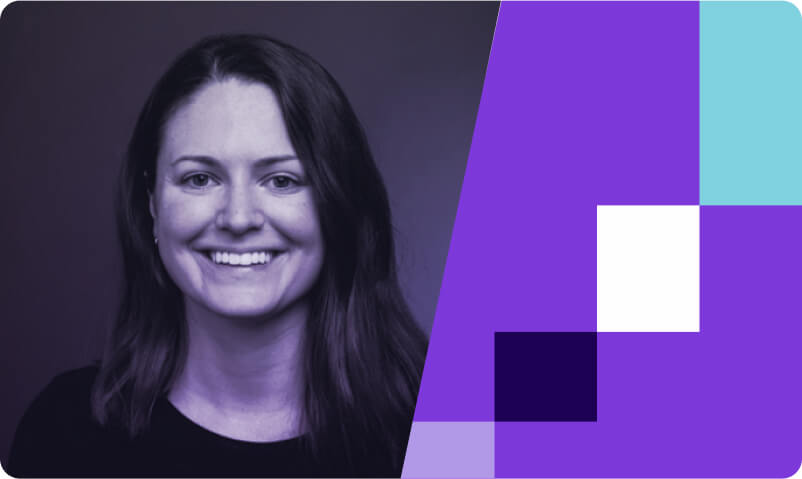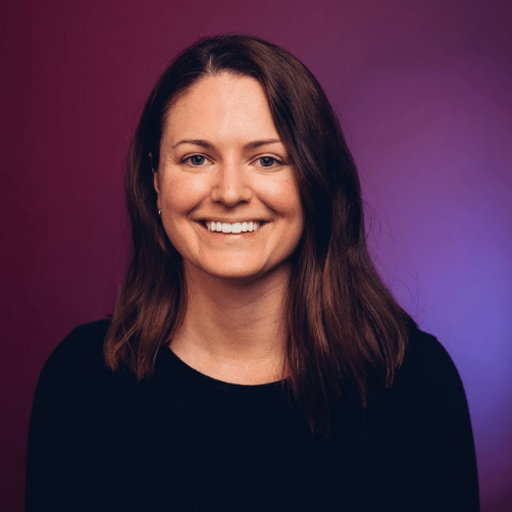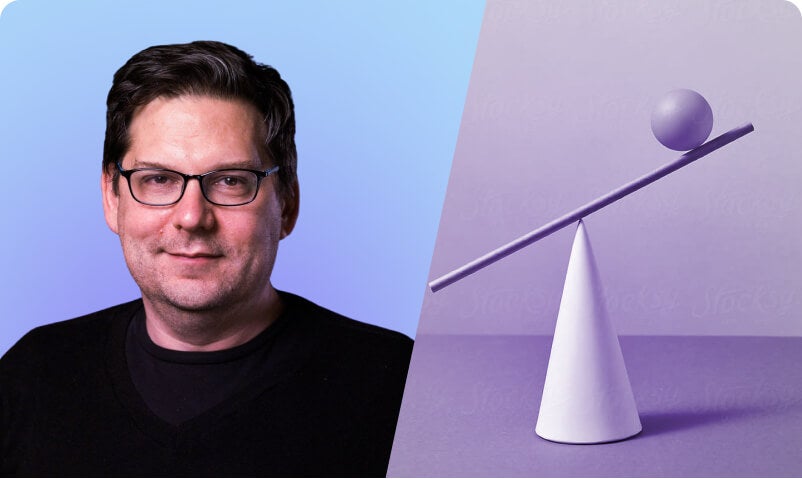A 4-step framework to drive effective change management programs
Stay up-to-date with data-backed insights
Thank you for your submission.

Change is hard, yet it’s a constant in today’s workplace.
The average employee encounters 10 planned change programs a year. That’s up 5x from 2016 according to the Harvard Business Review. If you’re already nodding and counting the number of changes you’ve been tasked with executing this year, it’s time to put a plan in place — a strategy to manage it all. If you don’t, your chances of success are shockingly low:
Despite enablement leaders’ best efforts, a staggering 70% of change programs fall short of their objectives (McKinsey).
Why the dismal success rate? It’s what happens when sales enablement teams focus too heavily on planning, leadership buy-ins, and communication and training. They leave program evaluation and business outcomes behind, if they think of them at all.
Including traditional methods of measurement, like senior leaders’ feedback, employee surveys, focus groups, and feedback from a few customers doesn’t cut it anymore. They’re often subjective, and lack the rigorous data necessary to tie change programs to business outcomes.
That’s why we’re providing you with this guide to a 4-step framework for effective change management. It moves you through four critical stages in any change plan, and draws on modern, objective, data-backed insights to light the way. We’ve used a product launch experience at Gong as our example throughout.
This framework is how we ensure our success at Gong.
Step 1: Track and influence adoption
Last June, we launched Gong Engage.
As you can imagine, we had our fair share of internal pre-launch communication, and we lived by an official launch plan. Our enablement team conducted training, and by all accounts the sessions were a huge success.
From the moment we launched, we turned our focus to results. We were able to do that because we had been thinking about how to track outcomes from our very first planning sessions.
An outcomes-focused approach meant we were able to celebrate our early traction during our monthly company all hands and our monthly revenue all-hands calls. Sharing progress updates on wide-reaching stages is a great way to keep up momentum and encourage adoption at scale early in a new program.
How did we have results at our fingertips so early into our new program? We set up an “Initiative” board in Gong pre-launch, which gave us easy access to data and visuals that answered our adoption questions:
- Are our reps talking about the new product?
- At what rate?
- Who is and isn’t adopting the new talk tracks?
This straightforward view gives us real-time visibility into adoption, month over month. It also makes it easy to take action and report back to our CRO and executive team if there’s an increase in adoption, a flatline, or a decline.
To help us accelerate and influence adoption, the enablement team kept tabs on adoption percentages at the team (i.e., leader) and individual levels. In the month after we launched Gong Engage, we used the all-hands calls to praise and call out high-adopting leaders and individuals.
If leaders had low adoption rates on their teams, we used our monthly leadership call to reinforce our 90% adoption goal. This was led by our CRO, who used a visual of how each team was pacing. We also took this opportunity to let them know that we had added a relevant “Smart Tracker” to their Deal Board view in Gong. (Smart Trackers use Gong’s proprietary AI to track key concepts in discussions, not just keywords.) This is a bullet-proof way for leaders to influence adoption at the deal and account level, because they can discuss clear stats from Smart Trackers during pipeline reviews.
For example, a rep could mention Gong Engage on multiple calls in a singular deal cycle, but that discussion might actually be driven by the customer. That’s not what we’re looking for. We want proactive pitching across the rep’s pipeline, because that’s the fastest way to move our multi-product metrics.
Step 2: Iterate based on automated insights
Change is not a one-time event. Rather, it requires continuous refinement. That’s why Gong’s automated insights were so helpful when it came time to iterate on this new program.
At the start of any program, you must understand how and when your new messaging is brought up in conversation. When we launched Gong Engage, we shared supporting slides with the field. One of our early data searches surfaced which slides were being used, and on which calls.
We built out this search to gain insight into how our top performers pitched the new product, and to capture voice-of-the-customer data by filtering for calls that included our key buyer personas.
This type of approach is especially impactful in keeping cross-functional teams, like product and marketing, connected to what’s happening in the field. Much to everyone’s delight, it’s all done without feedback sessions and awkward ride-alongs that can hurt the customer experience.
We used these insights to further refine our reinforcement plans. For example, we realized our reps were struggling with when to position Engage as part of the initial sale and how the introduction of new buyer personas changes the sales process. This insight gathered from capturing these conversation allowed us to schedule a fast-follow enablement roadshow where we reinforced the different if/then scenarios to help reps understand the different paths to take when speaking with prospects/customers.
Step 3: Understand early business outcomes
At this point, our sales enablement team had a firm grasp on how new messaging was landing in the market. But how did we know whether this change program was moving things in the right direction, toward the desired business outcomes?
Depending on sales cycle length, you can tie your programs to win rate, and answer the one question you really want to know: “Do we win MORE as a result of this program?”
Our corporate segment at Gong has a short sales cycle, so it’s a great place to look at early outcomes. When we released Gong Engage, we were able to track win-loss data around when we mentioned Gong Engage vs. when we don’t mention it, starting on day one. We had outstanding data by the time we were one quarter out.
For our enterprise business, which has a longer sales cycle, we import Gong call- and deal-level data into our existing BI tool via our Snowflake integration. That gives us visibility into other early leading indicators of success. During the Gong Engage launch, we looked at that data to understand pipeline impact when calls were tagged with new product mentions:
Access to this type of data enables us to make smart business and enablement decisions about a new program from day one of its launch. That’s incredibly important in terms of getting the most ROI from any new program.
Step 4: Reinforce to stay the course
Success is not just about achieving goals — it’s about sustaining them over the long haul. With the insights you need to iterate on messaging or training, paired with visibility into early business outcomes, your enablement team can continue reinforcing the behavior change you want. At this point, you’re ready to make good use of your enablement calendar to schedule moments of reinforcement.
With Gong Engage, we took every opportunity we had to share “Call snippets” of our top performers pitching the product as well as sound bites of customers responding to and raving about it. Here’s an example of the type of exchange we shared:
Gong also captured these examples in streams (automated library folders) that we use for onboarding and rep education:
We also updated our Engage Sales Playbook regularly. These updates were influenced by the voice of customer data we were able to capture at scale. Here’s an example of the chapters in our playbook we look to keep relevant:
Most importantly, the enablement team continues to influence adoption based on the numbers we see in Gong. They allow us to create bespoke reinforcement instead of painting with a broad brush. That means prescribing small-scale certification, a coaching initiative, or additional org-wide reinforcement, as needed.
Take the next step
There’s no turning back the clock to a time when change was slower and less frequent. That said, the teams that win will be the ones that use data and a clear framework to ward off the 70% failure rate mentioned in the introduction. Effective change management requires a strategic approach like the proven framework outlined above.
Ready to customize your Gong account and navigate your change programs with more confidence? Request a demo.
Want more GTM advice and data-driven insights from revenue leaders straight to your inbox each month? Subscribe to The Edge.



